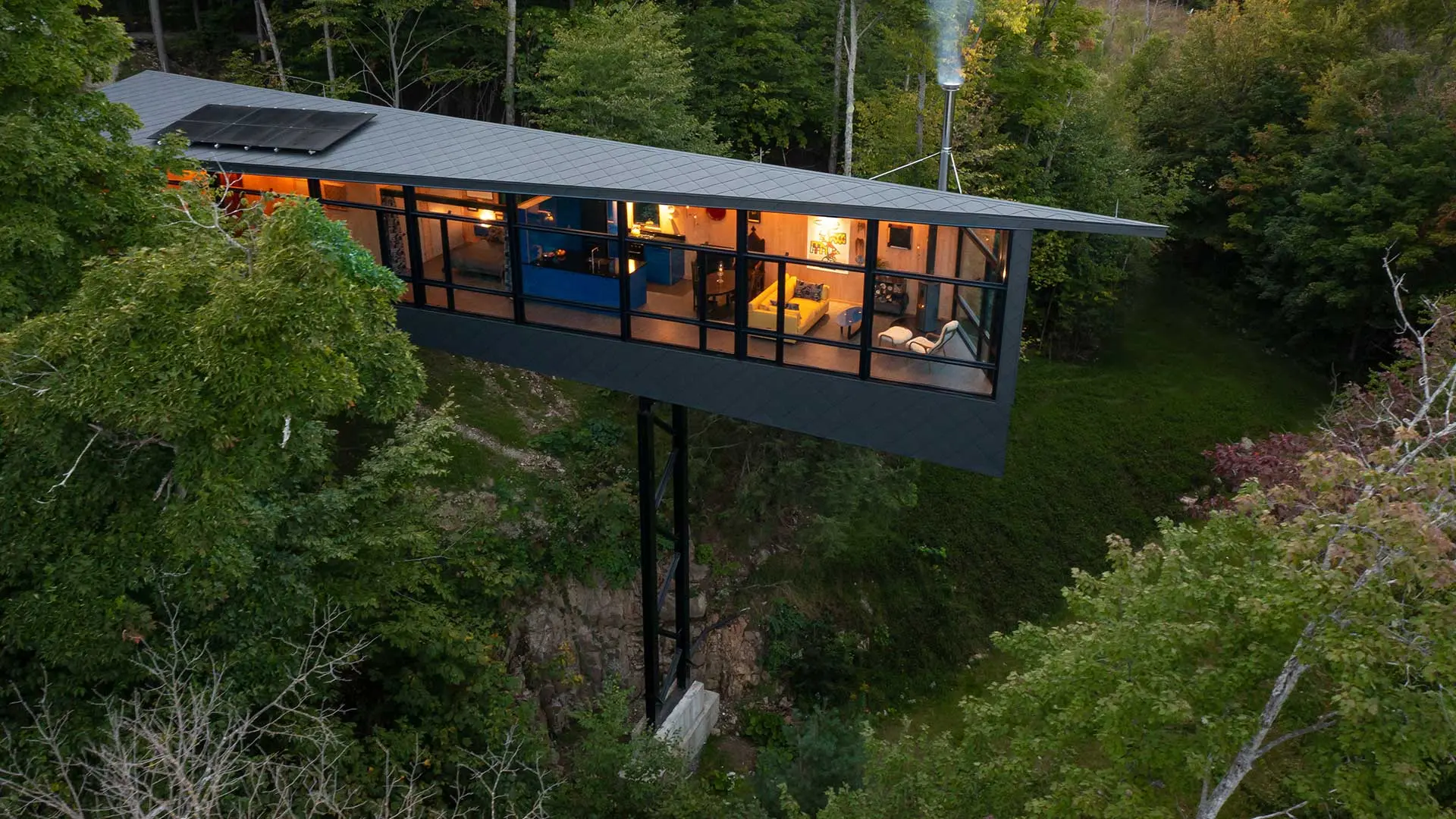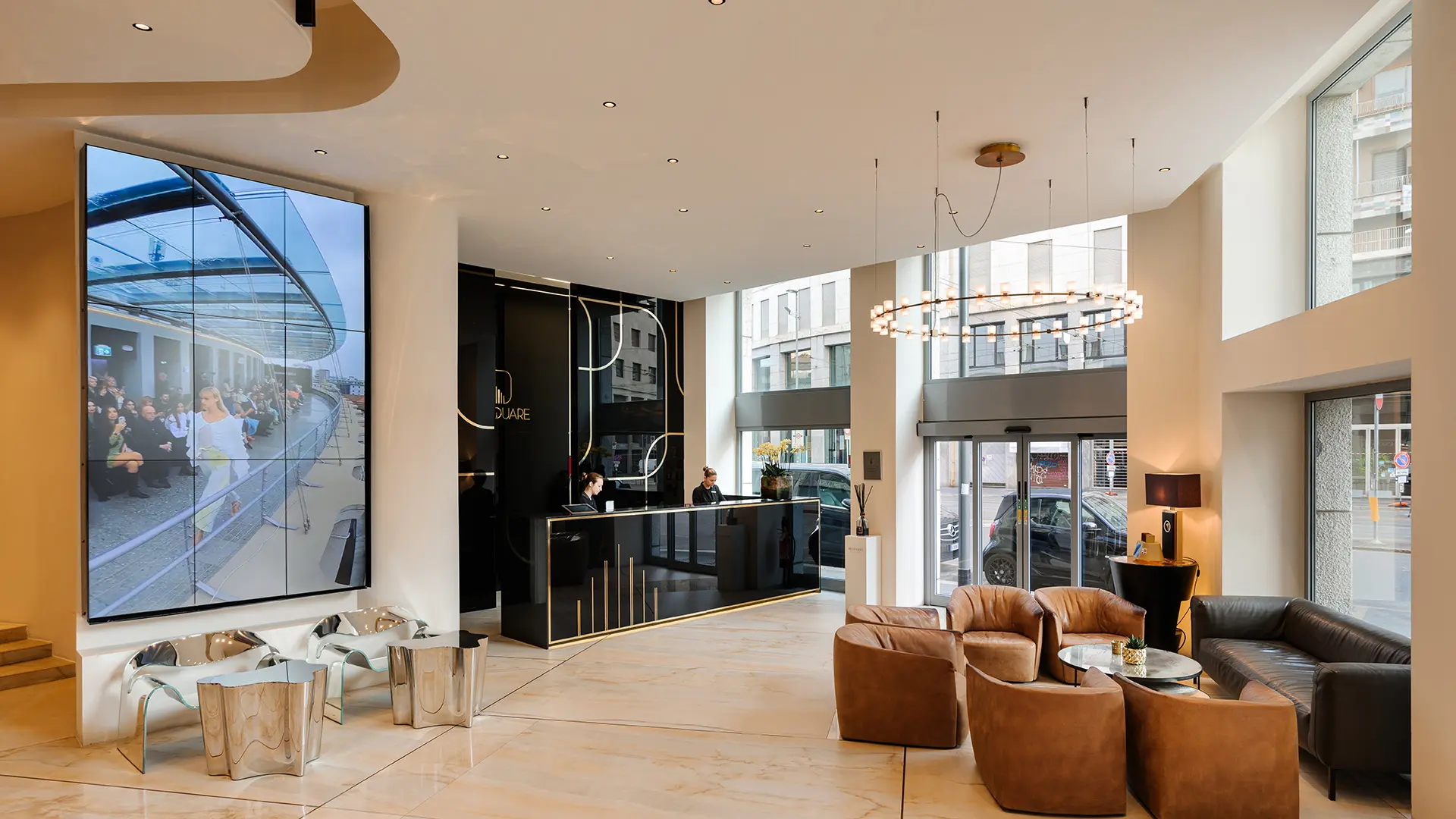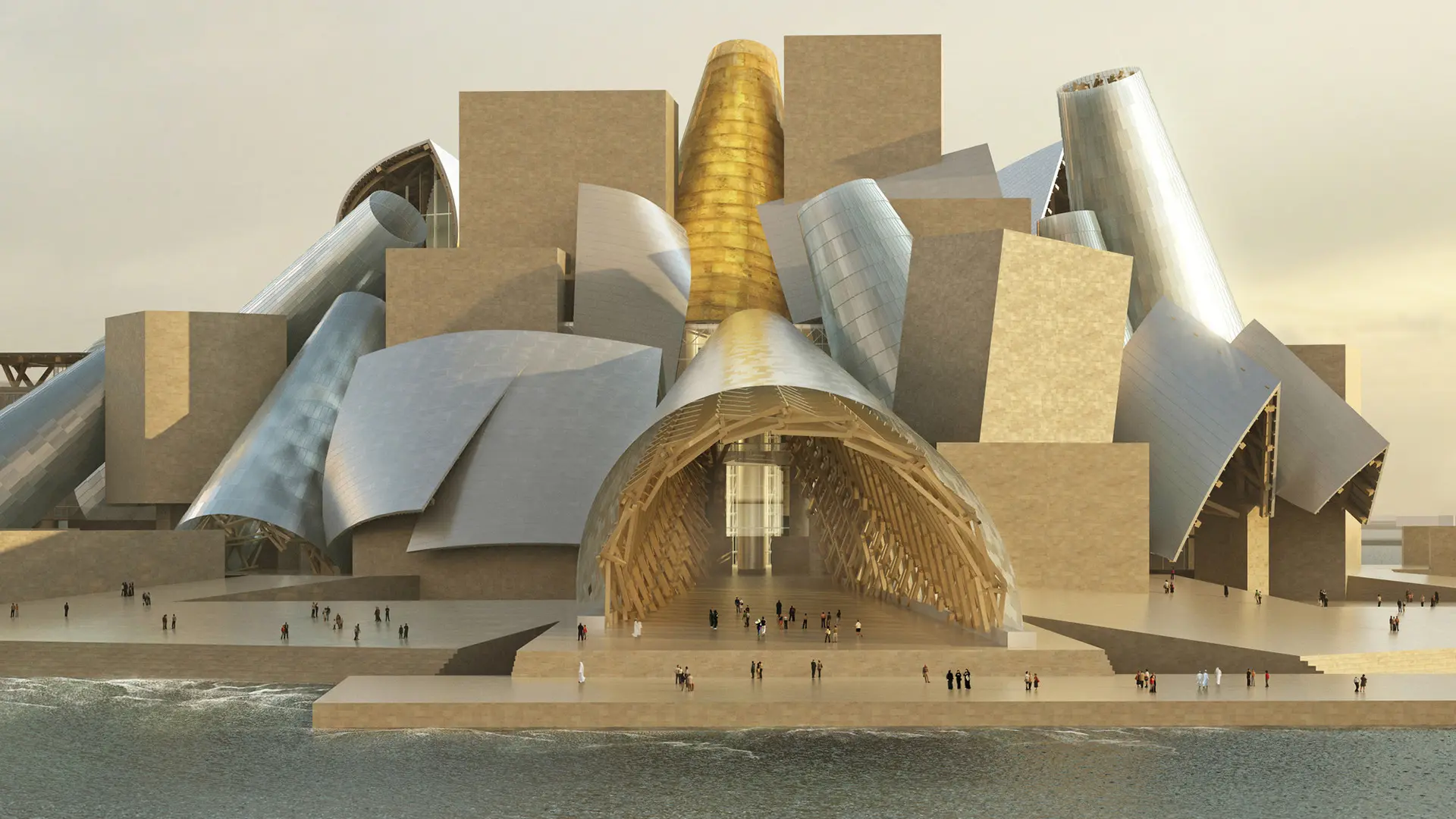In partnership with MiCodmc, a selection of establishments ripe for discovery during the 64th edition of the Salone del Mobile.Milano, from 21 to 26 April 2026
What is a home? The possible revolution in dwelling

Kariouk Architects, m.o.r.e. CLT Cabin - Ph. Scott Norsworthy
From the origins of a primary human need to the urgency to rethink the way we love on the planet. To build a sustainable future
What are the forms of contemporary living today and tomorrow? Salone del Mobile.Milano asked Andrea Staid, professor of Cultural and Visual Anthropology at Naba and of Cultural Anthropology at the University of Genoa, PhD at the Universidad de Granada, to reflect on the spaces we are inhabiting and those we will inhabit in future, where cities will be transformed into green oases preserving biodiversity and improving the quality of life.
Dwelling is an experience intrinsic to the human condition, a deep-.seated urge binding us to a specific place and time. As Freud pointed out, the home is often a metaphor for the mother’s womb, the first safe and protective refuge. Inhabited space, whether it is a hut or a metropolis, is more than just a physical structure: it is a place where practical and symbolic needs are entwined. Within it, the individual builds his or her identity, memories and relationships. The origins of the home are lost in the mists of time. The first forms of housing, simple natural shelters, testify to the innate need to be protected from the elements and mark off a space of one’s own. With the advent of agriculture and the consequent development of sedentarism, home living evolved, giving rise to increasingly complex and highly articulated constructions.
The home, therefore, is not only a material refuge, but also a cultural expression, a symbol of belonging and identity. Its forms and meanings vary in different ages, societies and cultures, but the fundamental need for a home remains universal. Inhabiting a space, in the anthropological sense of the term, means much more than occupying a physical volume. It is a creative act, a deep immersion in which we invest desires, dreams and memories, transforming a simple space into a place that belongs to us, a reflection of our identity. Marc Augé reminds us that humans are social beings, intrinsically tied to places. We continually build and rebuild our environments, shaping them in our own image, just as we need meaningful relationships with other people. In these places, our identity is formed, refined and transformed, in a constant dialogue with the outside world.
“In dwelling resides the being of man,” said Heidegger, summing up a profound concept in a few words. The home is our cocoon, the protected space in which we shape our most intimate humanity. By focusing on the ways we inhabit the world, we better understand who we are and how we relate to others. Living and dwelling, often regarded as synonymous, are two sides of the same coin. Both are dynamic processes, influenced by a multitude of factors: from climate to culture, technology and social context. Our homes are the result of a complex interaction between these factors, a unique expression of our history and identity. Our way of dwelling is a complex system of meanings that shapes every aspect of our existence. From everyday choices to the great life-changing decisions, from private to public space, it is the home that forges our gestures, languages and our relations with the surrounding world, including the natural world.
Every society, in the course of its history, devises specific representations of space, building a symbolic order that directs the actions of its members. This order is the result of a complex entwining of cultural, social, economic and environmental factors. Family relationships, economic activities, the perception of the landscape and the influence of the physical environment combine to define space and, consequently, to shape our lives.
The home is therefore not just a physical place, but a reflection of our collective and individual identity. If we live in a suburban skyscraper, in a small apartment without greenery or in a house in the country, this choice, the result of multiple factors, will inevitably affect our vision of the world, our social relationships and, ultimately, our quality of life.
Inhabited spaces are not simple containers, but veritable “inhabiting machines” that shape our lives and identities. They are, as Bourdieu maintains, social structures incorporated into bodies, daily practices and domestic space. However, dwelling is not an immutable datum, but a dynamic and constantly evolving process related to its context of cultural production. Anthropology has shown how, for most of human history, the home was conceived in terms of mobility, of nomadism. Living and traveling were entwined and interlaced in a continuous becoming, where stopping represented an intermediate phase, a pause in a broader journey. Inhabiting the world, we can say with certainty, is not a static act, but a continuous becoming between rootedness and movement. By moving, we explored new territories, adapting to different environments and shaping them in our image, so building a history made up of encounters, exchanges and transformations.


The home is therefore not only a physical place, but also a point of reference for a community. This is where relationships are built, experiences are shared and values are transmitted. In this sense, the challenge of sustainable living is also a collective challenge. We have to work together to create more resilient communities, more attentive to the well-being of people and the environment. The home, a refuge and expression of our humanity, is now at the center of a crucial reflection. In an era rocked by environmental and social crises; it is urgent to rethink the way we inhabit the planet, trying to establish a more balanced relationship with nature, of which we are a part. Every choice we make, from building a new home to furnishing an apartment, has an impact on the environment and future generations. It is our responsibility to act now to build a sustainable future by re-signifying gestures, relationships and materials.
Our future is at a crossroads: either we undertake a radical social and sustainable transformation, or we risk irreparably compromising our planet and, with it, our very existence. It is urgent to trigger a profound cultural revolution that redefines the way we live. The ecological house is not only a building constructed with efficient materials and powered by renewable energy, but a real manifesto of a new lifestyle. The time has come to supersede the conception of the ecological home as a simple sum of sustainable technologies and materials. We have to rethink the very concept of comfort, abandoning superfluous habits such as the indiscriminate use of air conditioning. Investing in proper insulation, enhancing natural ventilation and exploiting environmental resources will enable us to create healthy and pleasant environments, without compromising the planetary balance.
The ecological home is only one piece in a larger puzzle. To build a sustainable future, we need to transform our cities into green oases, fostering biodiversity and improving the quality of life. Concrete has to give way increasingly to greenery, hanging gardens and urban vegetable allotments. Only in this way will we be able to create more livable and climate-resilient environments. We need to explode the exteriors. Greenery really has to colonize our cities, because the expanded and ecological house is the home of the future.


 Sustainability
Sustainability







